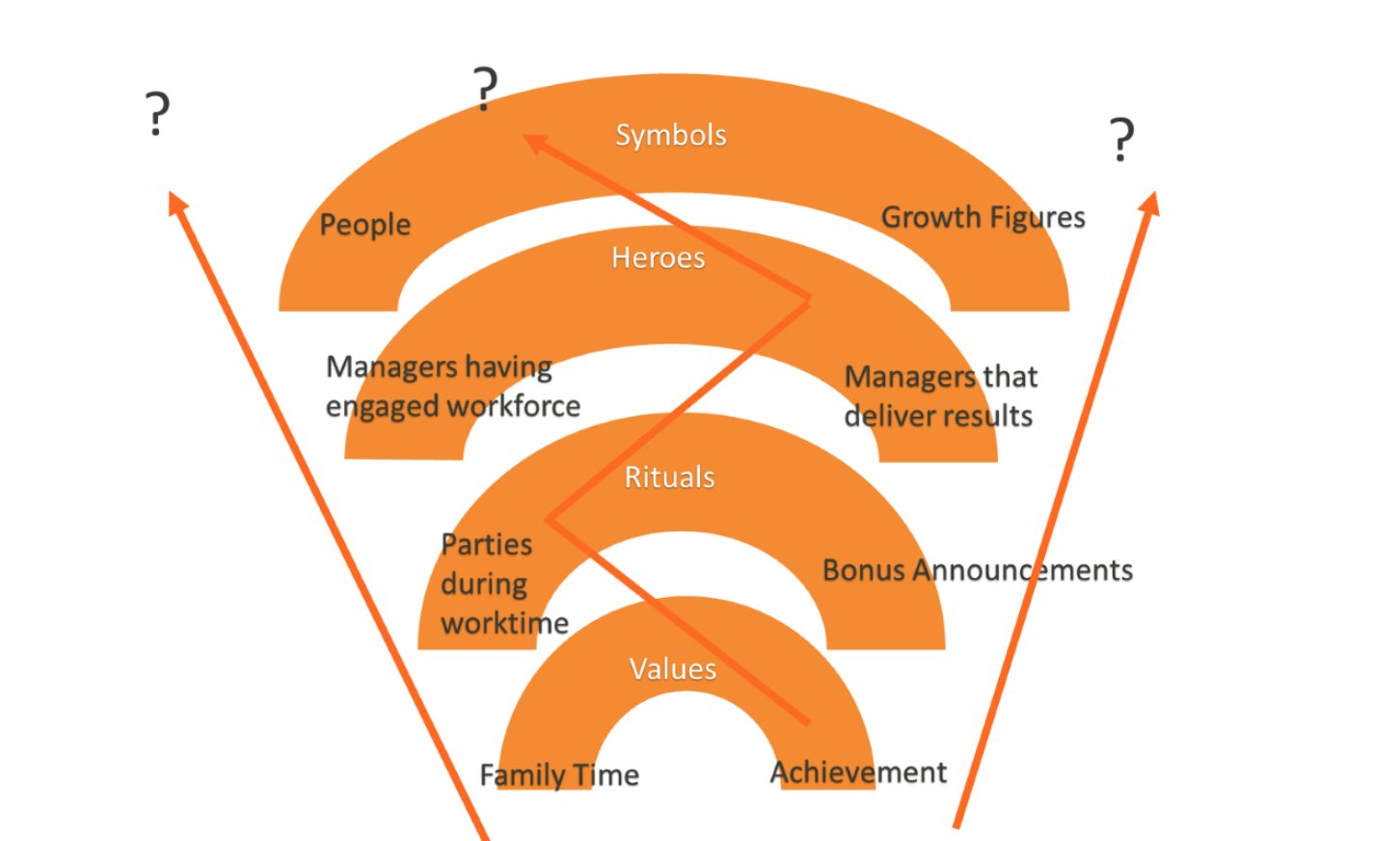People matter, results count
How can we help organisations to enable people to reflect on the “people matter, results count” statement across the globe, in a way that makes sense locally?
I’ve worked out a small example of how, by leveraging national cultural tendencies, organisations can do a much better job at creating an organisational culture, which radiates that people matter and results count, and how it might be perceived, reducing stress and increasing resilience.
Three things are important to clarify upfront:
1. We define organisational culture as the way members of an organisation relate to each other, their work, and the outside world, in comparison to other organisations.
2. We believe that national cultural tendencies will always trump organisational culture.
3. What people value doesn’t necessarily predict their behavior. We are all sometimes likely to behave against our values, simply because the exchange rate is good enough. With “exchange rate” I mean that we either get paid enough, learn enough, or otherwise profit from doing something contradicting the things we hold dear (e.g. do overwork at the expense of family time in exchange for having a nice company name on our CV).
National cultural tendencies will always trump organisational culture.
An example of two different national cultures
You want to roll out a performance management system that supports the value statement of “people matter, results count”. You are in charge of rolling this out in two countries; one Nordic country, one Anglo-Saxon country. The Nordic country scores what we call in Hofstede terminology “feminine” – the dominant value in society is consensus. The Anglo-Saxon culture scores “masculine” – the dominant value is competition.
Try introducing Anglo-Saxon style appraisal systems in the Nordics and you’ll be up for a real treat. The tendency is that it will be perceived as “you don´t trust us to work”. Leading to demotivation. And try working without an appraisal system in the Anglo-Saxon world and you’ll be presented with “where are my achievement goals”. Leading to demotivation.
There are ways to influence how people in organisations relate to each other, their work, and the outside world.
1. You can use things that are easily spotted from the outside; we call them symbols (e.g. logos).
2. You can promote a certain type of behavior and create what we call “heroes”.
3. You can install repetitive actions, which we call “rituals” – for example ringing a bell every time a sales deal is made.
The below graphs show you how you can leverage #theculturefactor to ensure people react to the statement in the way you intended (e.g. more towards the “people” side or more towards the “results” side).

In feminine cultures, the predominant value driver is family or leisure time. This means that the moment you’ll plan to work outside working hours you’ll occupy precious “me” time. Work should also be fun, so you can relate better to your colleagues, parties are a perfect ritual to exemplify the bond. The perfect way to show you have a people focus is to promote managers which showcase having an engaged workforce – even if their results are below that of the “cattle driver” which shows better results but has a less engaged workforce. And the best way to indicate you care about people is to show it.
In masculine cultures, the predominant value driver is the achievement (financial status). This means that any work that takes place outside working hours is ok, as long as it leads to an increase in achievement opportunities. Showing people’s success is important, so a perfect motivator is the public announcement of bonuses (public recognition). Promoting managers who deliver excellent results, even at the expense of their team is not a problem, if you want to create an “up or out” culture. And the best way to indicate that it’s all about the results is to show growth figures, financial results, etc.
Typically you’ll end up with a mix. The point is that you can consciously “socially engineer” the work experience and shape the type of organisational culture you need to serve your strategic goals. How these experiences are most likely to be interpreted under tense situations, is guided by national cultural values.
You can consciously “socially engineer” the work experience and shape the type of organisational culture you need to serve your strategic goals.
Why would you bother, you might ask
This year I am speaking at SHIFT on how organisations can grow more resilient within. This is a crucially important topic because people have a growing number of conflicting priorities and more uncertainties to deal with. If on top of a hectic personal life they also need to deal with a lot of hidden pressure to get the job done at work, there is an increasing risk of people mentally burning out.
Societies move towards pushing up the pension age, which can be seen as problematic but isn’t the actual problem. The problem is that people will not make it there, as many people are at risk of mentally burning out before they ever get to the current pension age.
This is why I advise organisations to invest more time for people to take a break, instead of being sucked along in a never-ending stream of reorganisations, burnouts, and bore-outs. In other words, to become more human.
Egbert Schram acts as the Group CEO of Hofstede Insights, a global cultural advisory, advising individuals, organisations, and governments on the impact of culture on work life.




Sisällön yhteydessä voidaan näyttää sosiaalisessa mediassa julkaistuja sisältöjä. Sosiaalisen median palvelut (esim. Facebook, Instagram, X ja YouTube) voivat hyödyntää evästeillä kerättyjä tietoja omassa käytössään. Näitä kohteita käytetään sinulle ja sinun etuihisi liittyvän mainonnan toimittamiseen. Lisäksi näitä evästeitä voidaan käyttää mittaamaan mainoskampanjoiden tehokkuutta. Mainosverkostot sijoittavat ne yleensä verkkosivuston ylläpitäjän luvalla.